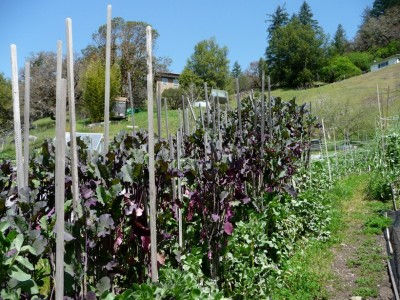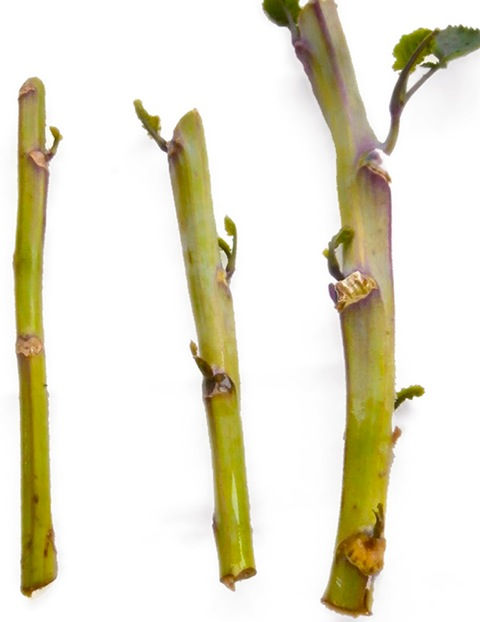Garden Tip: Care and Feeding of Tree Collards
At Ecology Action, annual crops are important because of their incredible ability to produce a lot of biomass for the compost. But we love perennials like tree collards too! Unlike annuals, the farmer or gardener plants them once, and with a little yearly care, they produce harvests for many years. When harvesting we collect the lower leaves first. The plants do need to be staked, for they grow taller than I am, at 5' 4"; hence their name, 'tree collards'! Taller plants usually produce larger leaves and have been reported to grow up to 11 feet tall. When staking the plants, we use a 10-foot-long stake and drive it three feet into the ground to make sure it is anchored well.. Tree collards have similar needs to other brassicas. In hotter locations they prefer partial shade and plenty of water. We make sure all our beds have a proper balance of nutrients, and we determine this through soil testing. Once we have the test results, we send them to our soil expert John Beeby (http://growyoursoil.org/)to create an amendment recipe based on the needs of our soil. We add this amendment to our perennials along with a yearly maintenance dressing of compost. In our perennial beds we use a slightly different compost recipe than for annuals, since we do not add soil to our perennial compost piles. We do not add soil to our perennial compost piles because we are not taking soil from the beds since we don't prepare these beds deeply on an annual basis. Perennials are an exciting aspect of a Biointensive garden that provides food, fragrance, compost and a low-maintenance schedule! If you would like more information about tree collards, visit https://blog.gardeningknowhow.com/guest-bloggers/john-jeavons-tree-collards/ for a detailed overview by John Jeavons. Related topics in this issue:
top | Newsletter Home |Table of Contents| Archive
|



 We propagate them from cuttings, and once they are established, you can take cuttings from the green side branches or the tops. A cutting should have at least six leaf nodes. Remove the leaves from this stalk, except the last one or two. Plant the stalk in a pot, burying at least three nodes. Not every cutting will propagate, so take several.
We propagate them from cuttings, and once they are established, you can take cuttings from the green side branches or the tops. A cutting should have at least six leaf nodes. Remove the leaves from this stalk, except the last one or two. Plant the stalk in a pot, burying at least three nodes. Not every cutting will propagate, so take several. 